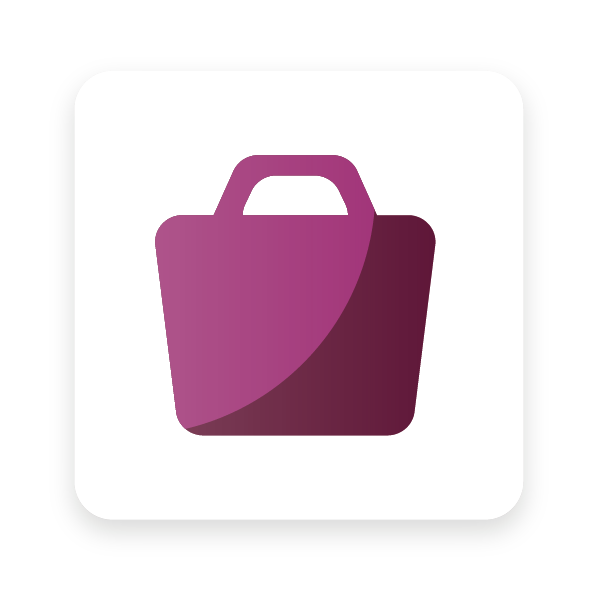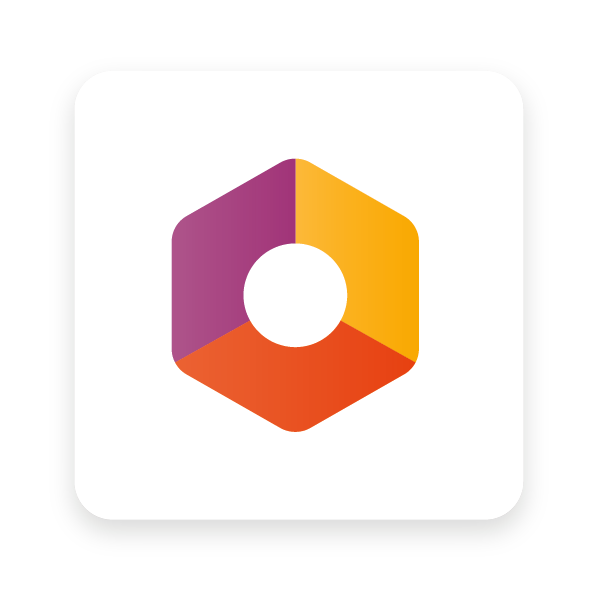Q&A
Welcome to the Odoo Knowledge Base, your go-to resource for quick answers to common questions about Odoo products, services, and solutions. Here, we provide clear, concise guidance to help you get the most out of your experience. Browse our Q&A sections to find helpful insights and expert tips.
Access, Users & Security
Odoo's Access, Users & Security features are designed to manage who can access what information and perform which actions within the system.
Q: Why can’t I log in
even though my username and password are correct?
A:
In Odoo 18, login issues are commonly caused by wrong login name matches (case sensitive). Also, verify whether 2FA is active by going to Settings → Users. If 2FA isn’t the issue, your account might be archived rather than deleted. Ask your administrator to check under Settings → Users → Archived.
Q: How can I restrict access
so a user can only see their own records?
A: In Odoo
18, record rules manage visibility. For example, in Sales,
create a record rule on sale.order with domain [('user_id', '=',
user.id)]. Combine this with Access Rights in Settings. Some modules, like the Sales app, have security options in the Users setup for "Own documents only" that can be done without making record rules.
Q: Why do I see duplicate
users after importing?
A: Odoo 18 links users and
contacts more tightly. If a contact is created for a user and then
imported again, duplication occurs. Always import with the external
ID column (id) to avoid duplicates.
Q: How do I force all users
to change their password?
A: Go to Settings →
Users, select all users, then use the bulk action Reset
Passwords. This sends reset emails and invalidates old sessions.
Q: How do I track who made a
change in the system?
A: Enable the Audit Log
module in Odoo 18 (Enterprise). This logs user actions (create,
update, delete) for sensitive models.


Sales & CRM
Sales & CRM in Odoo provides a comprehensive suite for managing customer relationships and sales processes. It covers everything from lead generation and opportunity tracking to sales order management, quotations, and invoicing.
Q: Why does my
quotation not show taxes?
A: In Odoo 18, taxes can be defined at several levels: product, product category, customer, and fiscal position. Ensure taxes are assigned to the product or product category, and verify that the fiscal
position applied to the customer is not removing them.
Q: How do I prevent
salespeople from editing confirmed orders?
A: In
Settings → Technical → Security → Record Rules, add a
rule that allows editing only in the ‘draft’ state. In Odoo 18,
this is easier with the Access Groups per Stage option in
Sales settings.
Q: How do I merge duplicate
leads in CRM?
A: Select the leads in CRM →
Pipeline, then use Action → Merge. Odoo 18 introduces
better deduplication by email, phone, and VAT, reducing manual
merges.
Q: Why is my lead scoring
not working?
A: Predictive lead scoring in Odoo CRM is always active by default. The probability of a lead’s success is calculated using specific variables, which you can customize. To do this, go to CRM → Configuration → Settings, find Predictive Lead Scoring, and click Update Probabilities. Then use the drop-down menu to select the variables that should influence the scoring.
Q: How can I track
commissions for sales reps?
A: Commissions for sales reps are available by default in Odoo 18. You can activate and manage them directly from the Sales app without installing any extra modules. Go to Sales → Configuration → Settings. Under the Invoicing section, enable the “Commissions” option and click Save.


Inventory & Logistics
Inventory & Logistics in Odoo helps businesses manage their stock, track product movements, and optimize their supply chain. It includes features for managing warehouses, locations, product lots and serial numbers, and various inventory operations like transfers, scrap, and putaway rules.
Q: Why does my
stock show negative quantities?
A: In Odoo 18, negative stock levels can occur because the system allows them by default. If you want to stop negative quantities, you’ll need to install or enable an additional module (such as the OCA “Stock Disallow Negative” module) that blocks operations resulting in negative stock, and then perform stock adjustments to correct existing negative values.
Q: How do I set up multiple
warehouses?
A: In Odoo 18, go to Inventory → Configuration → Warehouses → Create to add a new warehouse.
For advanced flows like push/pull rules or multi-step routes, you need to define routes and rules separately under Inventory → Configuration → Routes.
Q: Why can’t I assign
serial numbers to products?
A: In Odoo 18, to assign serial numbers: Go to Inventory → Configuration → Settings and enable Lots & Serial Numbers. On the product, General Information tab and set Track Inventory and choose → By Unique Serial Number. Serial numbers are assigned at receipt, so you must validate the incoming shipment before moving the product into stock.
Q: How do I resolve
“Lots/Serial numbers are required” errors?
A:
This happens when products are configured for tracking but serials
weren’t assigned. During validation, enter the serials in the
Detailed Operations pop-up.

Purchasing
The Purchasing app in Odoo streamlines the procurement process by managing requests for quotations, purchase orders, vendor relationships, and product receipts.
Q: Why does my
PO not reflect vendor pricelists?
A: In Odoo 18,
vendor pricelists are linked to the product under the Purchase
tab. Ensure the vendor is added with minimum quantity and price.
If multiple rules apply, Odoo selects the lowest price.
Q: How do I automate
purchase orders when stock runs low?
A: Configure
Reordering Rules on the product, then set lead times. In Odoo
18, reordering will be automated via the Scheduler (scheduled
action).
Q: How do I handle
dropshipping?
A: In the product’s Routes,
enable Dropship. In Odoo 18, dropshipping automatically
creates a linked purchase order and vendor delivery when the sales
order is confirmed.
Q: How do I manage multiple
currencies in vendor bills?
A: Activate
Multi-Currency in Accounting Settings, then set vendor
currency on the partner. In Odoo 18, the system auto-updates
exchange rates daily if the service is enabled.

Accounting & Finance
The Accounting & Finance app in Odoo provides tools for managing all financial operations, including general ledger, accounts receivable and payable, bank reconciliations, budgeting, and financial reporting.
Q: Why won’t
my invoice post in Odoo 18?
A: This usually happens
because the journal is missing an accounting sequence, or taxes
aren’t configured correctly. Go to Accounting → Configuration
→ Journals and verify.
Q: How do I reconcile bank
statements?
A: In Odoo 18, go to Accounting → Bank → Import file to import your bank statements.
Click the Reconcile button to match transactions with existing entries. In all versions, you can create custom reconciliation rules in Accounting → Configuration → Reconciliation Models to automate common matches.
Q: Why are payments not
matching invoices?
A: In Odoo 18, payments may not match invoices if:
- The currency of the payment and invoice are different without proper conversion.
- The payment is posted to a different journal than the invoice.
Q: How do I handle customer
credit notes?
A: Open the invoice, click Add
Credit Note. Odoo 18 lets you choose between Partial Refund,
Full Refund, or Modify Invoice.
Q: Why do tax reports not
match my invoices?
A: Check fiscal positions. In
Odoo 18, taxes can be replaced dynamically based on customer/vendor
location, which may override default taxes.


HR, Payroll & Expenses
The HR, Payroll & Expenses apps in Odoo manage all aspects of human resources, from employee records, recruitment, and time off, to automated payroll processing, expense tracking, and reimbursement, ensuring efficient workforce management and financial accountability.
Q: Why can’t
employees log their timesheets?
A: In Odoo 18, employees can log timesheets only if:
- The Timesheets app is installed.
- The employee has the proper access rights to log hours.
- Timesheet entries are linked to a project, task, or analytic account (depending on configuration).
Q: How do I configure
payroll in Odoo 18?
A: Install the Payroll
module, set up salary structures under Payroll → Structures,
then assign them to employees. Country-specific localizations add
compliant tax rules.
Q: Why are leave balances
not reducing when employees take time off?
A: In Odoo 18, leave balances are reduced only if:
- The leave type’s allocation method allows deduction (e.g., Fixed Days or Accrual).
- For accrual-based leave, an accrual plan is assigned to the employee.
- The leave request has been validated/approved.
Q: Can employees submit
expenses via mobile?
A: Yes. In Odoo 18, the mobile
app supports receipt scanning with OCR. Expenses go to My
Expenses → Submit to Manager.
Q: How do I reimburse
approved expenses?
A: After manager approval, Odoo
18 automatically generates a vendor bill under the company’s
payable account.


Projects & Services
The Projects & Services apps in Odoo facilitate comprehensive project management, including task assignment, progress tracking, time sheeting, and resource allocation.
Q: Why can’t
I invoice project timesheets?
A: Ensure the project
has Billable enabled and linked to a Sales Order. In Odoo 18,
timesheets without a linked SO won’t generate invoices.
Q: How do I track
profitability per project?
A: Activate Analytic
Accounting. In Odoo 18, each project can have its own analytic
account for tracking costs and revenues.
Q: Why are tasks not
appearing for users?
A: Check if the user is
assigned to the project. In Odoo 18, tasks can be restricted by
Project Visibility (Public, Invited Users, Followers Only).
Q: How do I set up project
milestones?
A: In Odoo 18:
- Go to Project → Configuration → Settings and enable Milestones.
- Create milestones at the project level as stages.
- Optionally, enable milestones on tasks within the project so each task can be linked to a milestone.
- You can attach automated actions or email reminders to milestone stages if needed.
Q: How do I invoice based on
milestones?
A: In Odoo18:
- Create a service product with Invoice Policy → Based on Milestones.
- Link the project to a Sales Order that includes the milestone-based product.
- As milestones are completed, Odoo generates invoices for the corresponding portion of the service product.


Website & eCommerce
The Website & eCommerce apps in Odoo provide a complete platform for building and managing online presence and sales. They allow businesses to create and customize professional websites, manage product catalogs, process online orders, handle payments, and track customer interactions.
Q: Why is my
product not showing in the webshop?
A: In Odoo 18,
ensure the product has Published on Website enabled. Also
check that eCommerce Category is set.
Q: How do I set different
prices per website?
A: Enable Multi-Website
and Pricelists. Assign pricelists per website under Website
Settings.
Q: Why is checkout stuck on
delivery step?
A: Ensure a shipping method is
published and available for the country. In Odoo 18, shipping
methods can be restricted by zone.
Q: How do I enable guest
checkout?
A: Go to Website → Configuration →
Settings → Shop - Checkout Process and enable under Sign in/up at checkout →Optional or Disabled. "Optional" allows guests to register from the order confirmation email to track their order.
Q: Why are online payments
failing?
A: Verify the payment provider (Stripe,
PayPal, etc.) is enabled and published. In Odoo 18, payment tokens
may need to be re-synced under Settings → Payment Providers.

Technical, Reporting & Troubleshooting
The Technical, Reporting & Troubleshooting aspects of Odoo encompass the underlying system configurations, advanced reporting capabilities, and tools for diagnosing and resolving issues. This includes managing system parameters, scheduled actions, database structure, user interface customization, and generating detailed analytical reports.
Q: Why do
scheduled actions not run?
A: In Odoo 18, scheduled
actions (cron jobs) run via the Odoo service worker. Check Settings
→ Technical → Scheduled Actions and ensure the status is
Active.
Q: How do I enable developer
mode?
A: Go to Settings → Activate Developer
Mode. In Odoo 18, this can also be done via the user menu.
Q: Why do my custom reports
not print?
A: Check if QWeb templates are valid. In
Odoo 18, invalid templates block rendering and log errors in the
server console.
Q: How do I export filtered
data?
A: Apply filters in list view, then click
Export. In Odoo 18, the Export All Data option
includes relational fields for advanced use.
Q: Why is Odoo slow with
many users?
A: Odoo 18 relies heavily on PostgreSQL
performance. Large databases should use database partitioning
and longpolling workers. If you’re using Odoo SH, the minimum number of workers is 1, which is calculated for up to 25 concurrent users. When your user base grows beyond this, it’s recommended to increase the number of workers to maintain performance.
Q: How do I debug
workflows?
A: Enable developer mode, go to Settings
→ Technical → Automation → Server Actions, and check log
outputs in /var/log/odoo/odoo.log.
Q: Why don’t my emails
send?
A: In Odoo 18, outgoing mail is managed in
Settings → Technical → Outgoing Mail Servers. Test the
connection. Also check that the scheduled action Mail: Email
Queue Manager is active.
Q: Where can I find detailed
logs of system errors?
A: Check the Odoo server logs
(odoo.log). In Odoo 18, errors are also summarized in the Debug
Window (bottom right) when developer mode is enabled.
Still have questions? Contact our support team!
